Life at Nexxen with Yair Shilo
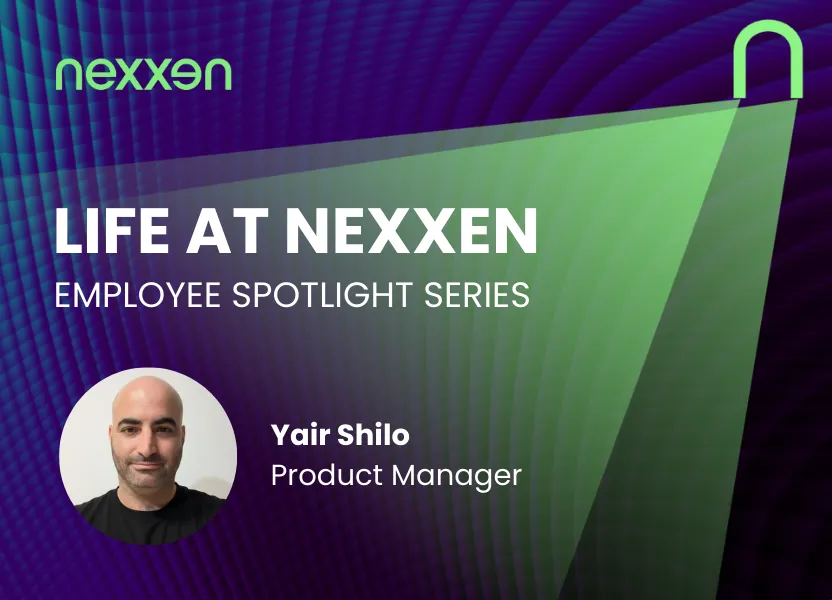
Linkedin Icon-xtwitterlogo-black Life at Nexxen is a blog series spotlighting our employees – from their career journeys and go-to advice to the rituals and activities that make up their days here at Nexxen. In this edition of Life at Nexxen, we spoke with Yair Shilo, a Product Manager based in our Tel Aviv office. How did your journey at Nexxen start? I joined Taptica in 2017 in Publisher Relations, supporting mobile UA. That role gave me foundational exposure to adtech, supply dynamics, and performance-driven buying. I later transitioned into Tremor Video DSP as a Programmatic Trader, eventually managing and directing teams. Those years shaped my product philosophy: capabilities should accelerate decision-making, not slow it down. What led you from Director of Programmatic Operations into Product? I’ve always been drawn to removing operational friction. If something is repetitive or slows teams down, I immediately start thinking about how to streamline or automate it. Over time, I became a natural bridge between Ops and Product, translating pain points into solutions and helping validate improvements. Moving into Product allowed me to scale that impact across all users, not just a single team. Can you describe the DSP org and your role within it? Our DSP Product organization is split across UX and runtime. I sit within the UX group, owning reporting, analytics, and the core DSP UI workflows. My work focuses on turning complex programmatic data into actionable insights and designing flows that help traders move faster, make better decisions, and avoid costly mistakes. I collaborate closely with engineering and design as well as other PMs to define problems, shape solutions, and ship capabilities that streamline the campaign lifecycle. I believe in keeping teams flat and collaborative so decisions move quickly and context stays close to the people building the product. How do Product Managers work with Engineering at Nexxen? I partner with a dedicated, domain-focused engineering team called FLY. My role is to translate user and business needs into clear requirements, prototype solutions directly, often using Vibe coding, and work with design on the final user experience. Engineering brings technical insight and feasibility checks, and together we iterate until we land on a solution that addresses the underlying problem, not just the initial request. A flat, open working style, supported by AI-assisted tools, helps us iterate faster and stay aligned. How do Product teams source and use user feedback? We collect feedback through direct conversations, internal teams, feature requests, structured UX sessions, and surveys. The hard part isn’t collecting feedback – it’s prioritizing it. I look for patterns that impact workflow efficiency, clarity, or performance. When multiple signals point to the same friction point, that becomes a priority. My focus is on filtering noise and ensuring we address the issues that truly matter. You were involved in the Tremor – Amobee DSP consolidation. What helped you and your team complete that project? The consolidation was one of the most challenging and high-impact efforts I’ve worked on. We had to merge workflows and standardize operations across two DSPs while keeping active campaigns healthy. We succeeded because of strong cross-functional alignment and a willingness to challenge legacy assumptions when they held the platform back. It required focus, trust, and a shared belief in building something better. Do you have a routine that helps you start or end your workday? My mornings always starts with a cup of coffee, and syncing with my engineering partners. Quick hallway conversations with other PMs often solve problems faster than formal meetings. How do you spend your time outside of work? Most of my time goes to my four kids: a 7-year-old, a 5-year-old, and 1-year-old twins. When I get a rare quiet moment, you’ll usually find me running, watching almost any elite sports I can find, or losing myself in a TV series a puzzle, or a quick brain game. I used to travel and play guitar more often, but these days, squeezing in those passions feels like a little victory. A closing thought? I believe every problem has a solution. I like to challenge existing paradigms, cut through noise, and break down complex challenges together with the people closest to the work. I’m lucky to work with incredibly bright, fun people who make the tough problems energizing rather than overwhelming. That’s what motivates me. Building capabilities that create real impact, and today, with AI and new tools, there’s an even greater opportunity to do so. Read Next Connect With Us Learn how you can effectively and meaningfully leverage today’s video and CTV opportunities with our end-to-end platform, data and insights. Contact Us
How We’re Solving Southeast Asia’s Measurement Challenge
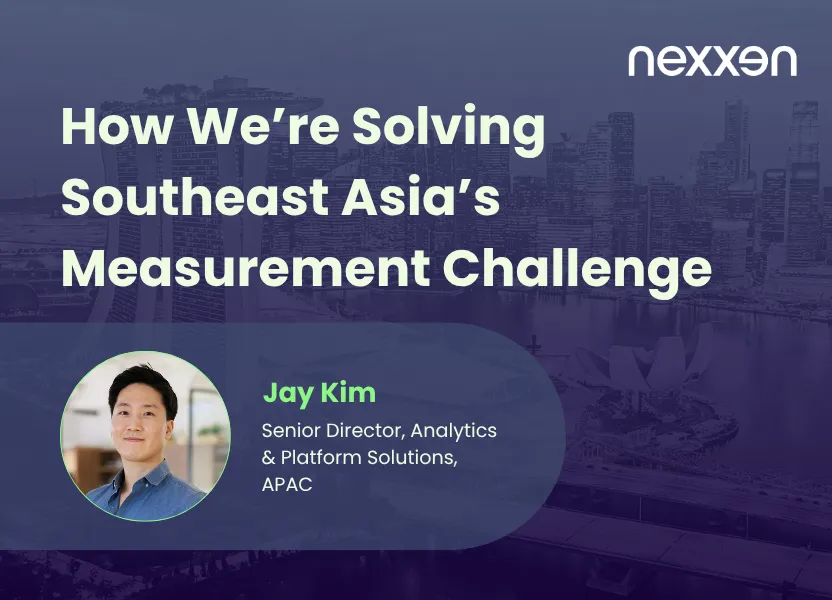
Linkedin Icon-xtwitterlogo-black As Connected TV (“CTV”) reshapes the manner in which audiences engage with content, one piece of advertising real estate is emerging as a powerful gateway for brand discovery: the Smart TV home screen. In this Q&A, we speak with Amit Dadush, Managing Director at VIDAA, and Ally Appelbaum, Vice President, Global CTV Partnerships at Nexxen, to explore the value of these placements — from design and targeting, to user experience and creative strategy — and what brands need to know to get the most out of them. Amit Dadush Managing Director VIDAA Ally Appelbaum Vice President, Global CTV Partnerships Nexxen Let’s start with the basics—why are Smart TV native placements becoming such a coveted space for advertisers today? Amit: At the end of the day, it comes down to attention. When people land on the CTV home screen, they’re not scrolling aimlessly — they’re focused on choosing what to watch. That makes it one of the few environments where you have undivided, intentional engagement. Add to that the size and prominence of the TV in the living room, and you’ve got a placement that naturally carries weight for advertisers. Ally: Think about it — before someone hits play, they’re actively browsing. Nielsen says viewers spend over 10 minutes on these screens deciding what to watch. That’s a huge window of attention. If your brand shows up during that moment of decision-making, in a space that feels natural to the TV experience, you meet viewers when they’re most open to discovering something new. How do you balance the need for impactful advertising with maintaining a seamless and user-friendly experience on the home screen? Amit: We flip the script. Legacy TV advertising was a blunt instrument, and our model is built on precision. By using data to ensure the right ad reaches the right household at the right time, we serve fewer, more relevant ads. This isn’t a balance; it’s an upgrade. It transforms advertising from an interruption into a valuable part of the experience. Ally: I agree, relevance is everything. With Nexxen’s suite of audience targeting solutions including exclusive access to VIDAA ACR data, we can make sure ads feel engaging to the independent viewer rather than feeling out of place or intrusive. And when the creative is designed to blend with the environment, it doesn’t disrupt browsing — it enhances the experience by surfacing content or products that fit in the moment, so no impression is wasted. From a data and targeting standpoint, what makes Smart TV native placement ads so valuable? Ally: What makes these placements so valuable is the transparency you get from them. Because they’re tied to ACR data, advertisers don’t just know their message was shown — they can actually see how households respond, what drives engagement and how that ties back to outcomes. It turns these touchpoints into a measurable, data-rich part of the campaign, not just a branding play. Amit: I’d build on that by saying it’s also about timing. These placements show up right at the moment when people are deciding what to watch. Before they’ve opened an app or picked a show, they’re more open to discovery — which makes this the point of maximum influence. Other ads come later in the journey; Smart TV native placements sit right at the entrance. How do you see the role of native placements evolving as CTV platforms become more personalized and content-rich? Amit: Its role will only become more central. The home screen will evolve from a static menu into a dynamic, intelligent curator. It will anticipate what you want to watch based on who’s in the room and the time of day. Advertising will seamlessly integrate into these personalized recommendations, becoming a service that helps you discover new content, not just a promotion. Ally: From our side, the exciting part is how the data will evolve right along with it. As these placements get more personalized, the signals we can capture — like viewing patterns, time-of-day habits, even content preferences — give advertisers a much clearer picture of what’s working. That means campaigns won’t just be more relevant for viewers, they’ll also be smarter for brands, with data feeding back into targeting and measurement in near real time. It’s personalization that benefits both sides. Are there any misconceptions advertisers have about Smart TV native placement inventory or its impact? Ally: I think one misconception is that these placements are just background noise — like digital billboards on a screen. People spend time here making decisions, and that means they notice what’s in front of them. Another one I hear is that ads in this space feel intrusive, but when the creative is designed well and the targeting is on point, it actually feels like part of the experience. Amit: I’d add that some advertisers underestimate how active this environment really is. These placements influence what people choose to watch or download in the moment, and we have the data to show the lift they create — whether that’s brand consideration or direct action. They’re far from a “nice-to-have.” They can be a pivotal part of the path to conversion. VIDAA has seen impressive global growth. How does this scale influence the opportunities you offer advertisers—and how does your collaboration with Nexxen unlock even more value? Amit: Scale is everything. It’s what transforms a good idea into a powerhouse. Our global footprint means we’re not just offering a niche audience; we’re providing access to a massive, diverse and engaged viewership. More devices mean more premium inventory and, crucially, a richer pool of data to ensure precise targeting without sacrificing scale. That’s precisely why our partnership with Nexxen is so critical. Our philosophy at VIDAA is to master the platform — to build the best possible operating system and hardware. By integrating Nexxen’s best-in-class advertising technology directly into our platform, we empower them to do what they do best: unlock the full value of this inventory for advertisers. This isn’t just a
Q&A: VIDAA and Nexxen on Unlocking Smart TV Advertising
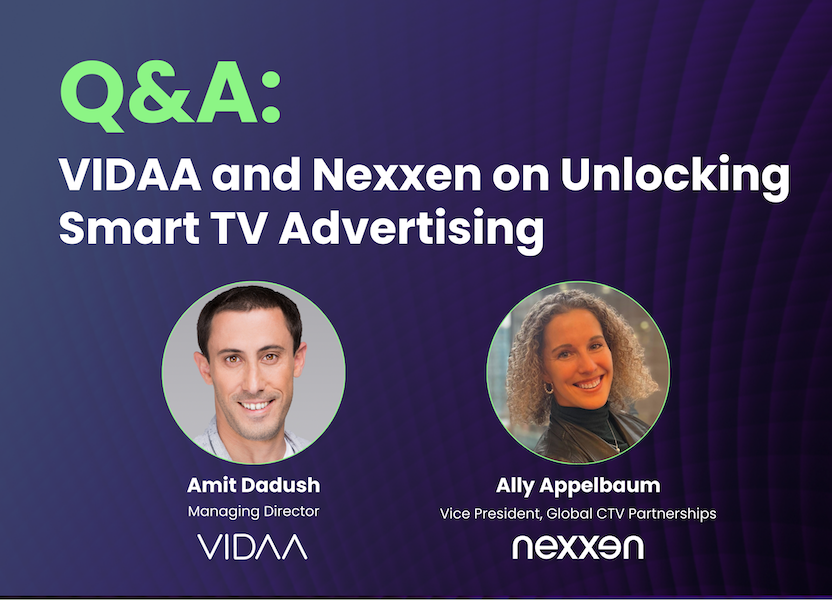
Linkedin Icon-xtwitterlogo-black As Connected TV (“CTV”) reshapes the manner in which audiences engage with content, one piece of advertising real estate is emerging as a powerful gateway for brand discovery: the Smart TV home screen. In this Q&A, we speak with Amit Dadush, Managing Director at VIDAA, and Ally Appelbaum, Vice President, Global CTV Partnerships at Nexxen, to explore the value of these placements — from design and targeting, to user experience and creative strategy — and what brands need to know to get the most out of them. Amit Dadush Managing Director VIDAA Ally Appelbaum Vice President, Global CTV Partnerships Nexxen Let’s start with the basics—why are Smart TV native placements becoming such a coveted space for advertisers today? Amit: At the end of the day, it comes down to attention. When people land on the CTV home screen, they’re not scrolling aimlessly — they’re focused on choosing what to watch. That makes it one of the few environments where you have undivided, intentional engagement. Add to that the size and prominence of the TV in the living room, and you’ve got a placement that naturally carries weight for advertisers. Ally: Think about it — before someone hits play, they’re actively browsing. Nielsen says viewers spend over 10 minutes on these screens deciding what to watch. That’s a huge window of attention. If your brand shows up during that moment of decision-making, in a space that feels natural to the TV experience, you meet viewers when they’re most open to discovering something new. How do you balance the need for impactful advertising with maintaining a seamless and user-friendly experience on the home screen? Amit: We flip the script. Legacy TV advertising was a blunt instrument, and our model is built on precision. By using data to ensure the right ad reaches the right household at the right time, we serve fewer, more relevant ads. This isn’t a balance; it’s an upgrade. It transforms advertising from an interruption into a valuable part of the experience. Ally: I agree, relevance is everything. With Nexxen’s suite of audience targeting solutions including exclusive access to VIDAA ACR data, we can make sure ads feel engaging to the independent viewer rather than feeling out of place or intrusive. And when the creative is designed to blend with the environment, it doesn’t disrupt browsing — it enhances the experience by surfacing content or products that fit in the moment, so no impression is wasted. From a data and targeting standpoint, what makes Smart TV native placement ads so valuable? Ally: What makes these placements so valuable is the transparency you get from them. Because they’re tied to ACR data, advertisers don’t just know their message was shown — they can actually see how households respond, what drives engagement and how that ties back to outcomes. It turns these touchpoints into a measurable, data-rich part of the campaign, not just a branding play. Amit: I’d build on that by saying it’s also about timing. These placements show up right at the moment when people are deciding what to watch. Before they’ve opened an app or picked a show, they’re more open to discovery — which makes this the point of maximum influence. Other ads come later in the journey; Smart TV native placements sit right at the entrance. How do you see the role of native placements evolving as CTV platforms become more personalized and content-rich? Amit: Its role will only become more central. The home screen will evolve from a static menu into a dynamic, intelligent curator. It will anticipate what you want to watch based on who’s in the room and the time of day. Advertising will seamlessly integrate into these personalized recommendations, becoming a service that helps you discover new content, not just a promotion. Ally: From our side, the exciting part is how the data will evolve right along with it. As these placements get more personalized, the signals we can capture — like viewing patterns, time-of-day habits, even content preferences — give advertisers a much clearer picture of what’s working. That means campaigns won’t just be more relevant for viewers, they’ll also be smarter for brands, with data feeding back into targeting and measurement in near real time. It’s personalization that benefits both sides. Are there any misconceptions advertisers have about Smart TV native placement inventory or its impact? Ally: I think one misconception is that these placements are just background noise — like digital billboards on a screen. People spend time here making decisions, and that means they notice what’s in front of them. Another one I hear is that ads in this space feel intrusive, but when the creative is designed well and the targeting is on point, it actually feels like part of the experience. Amit: I’d add that some advertisers underestimate how active this environment really is. These placements influence what people choose to watch or download in the moment, and we have the data to show the lift they create — whether that’s brand consideration or direct action. They’re far from a “nice-to-have.” They can be a pivotal part of the path to conversion. VIDAA has seen impressive global growth. How does this scale influence the opportunities you offer advertisers—and how does your collaboration with Nexxen unlock even more value? Amit: Scale is everything. It’s what transforms a good idea into a powerhouse. Our global footprint means we’re not just offering a niche audience; we’re providing access to a massive, diverse and engaged viewership. More devices mean more premium inventory and, crucially, a richer pool of data to ensure precise targeting without sacrificing scale. That’s precisely why our partnership with Nexxen is so critical. Our philosophy at VIDAA is to master the platform — to build the best possible operating system and hardware. By integrating Nexxen’s best-in-class advertising technology directly into our platform, we empower them to do what they do best: unlock the full value of this inventory for advertisers. This isn’t just a
Nexxen: Future-Ready Advertising Solutions for the Cookieless, Cross-Screen, and AI Era
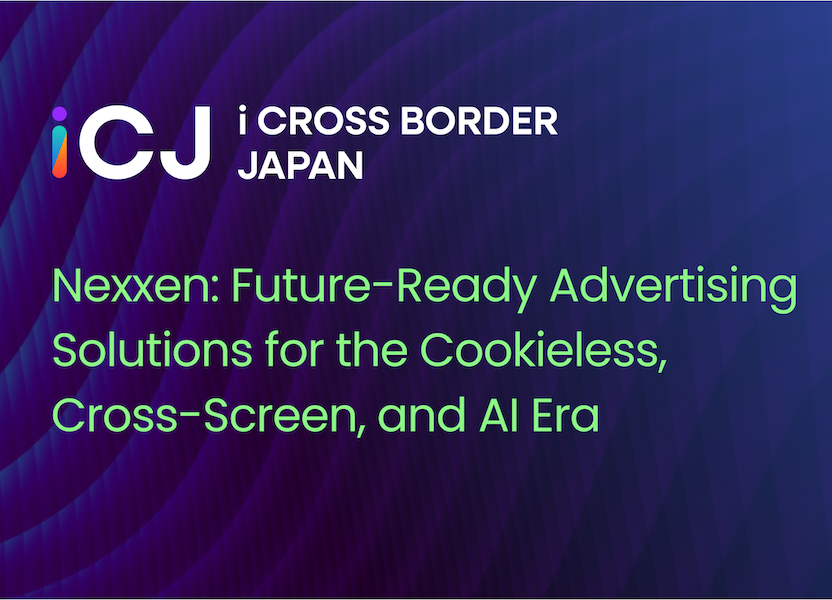
From 0 to 60: Building a Longstanding Brand with the World’s Fastest Sport From 0 to 60: Building a Longstanding Brand with the World’s Fastest Sport
How Nexxen Reaches Fans in a Fragmented NFL Sports Landscape
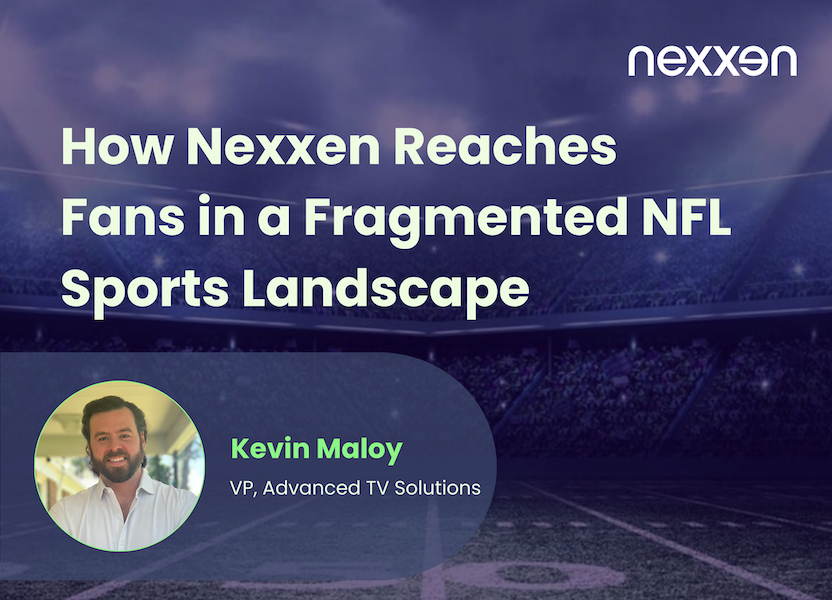
Linkedin Icon-xtwitterlogo-black Around the world, fans increasingly search for clarity on how to watch NFL games. With rights scattered across linear TV and a growing mix of CTV platforms, many fans struggle just to find the action. Nexxen’s Inside Live Sports report reveals the challenge: 59% of fans say they struggle to find where games are airing, and half admit they’ve even missed games because they didn’t know where to watch. Add subscription fatigue and a growing crowd of frustrated viewers, and it’s clear: fragmentation is sapping the fan experience, and with it, advertisers’ ability to connect. At the same time, NFL fandom is evolving. Nexxen Discovery shows a +40% spike in highlight clips and memes on TikTok and YouTube, while fantasy football, betting and real-time stats drive second-screen behaviors during live games. Pop culture and celebrity-driven content are also bringing in new audiences. In short, NFL engagement is no longer confined to gameday. It’s now everywhere, all week long. Football: The Anchor Sport Despite the confusion, one sport unites audiences: football. It’s the top driver of CTV subscriptions, with fans making sure NFL games are part of their viewing lineup. At the same time, the NFL continues to dominate traditional TV with 78% of Gen X and nearly 40% of Gen Z still tuning in. Advertisers also benefit from unified reach, with ad campaigns running consistently across both linear and streaming environments. This combination makes NFL matchups like Sunday Night Football, the Playoffs, and the Super Bowl rare cultural moments where fans show up en masse across devices, platforms, and screens. Fans are Ready for Ads It’s not just about reach; it’s about resonance. Live sports fans, and especially superfans, are more responsive to advertising than the general population, driving the strongest lift in purchase intent. When campaigns are strategically placed around NFL content, brands can tap into that heightened responsiveness and convert passion into performance. And emotion matters: ads that evoke warmth and happiness deliver the biggest lower funnel lift among live sports fans. Combine the NFL’s emotionally charged environment with creative that leans into family, camaraderie, or humor, and the impact multiplies. Turning Fragmentation into Focus The NFL provides the anchor moments where fans rally together, while fandom itself has expanded into a multi-screen, always-on experience. To meet fans wherever they’re engaging, whether during a live game, scrolling TikTok highlights or checking fantasy stats, brands need converged strategies that unify fragmented viewing and connect across screens. For advertisers, this complexity is also the opportunity. By unifying campaigns across screens, aligning creative to different types of fans and tying activations to measurable outcomes, Nexxen helps brands turn evolving fandom into lasting impact. Get in the Game with Nexxen NFL 360 Get Nexxen’s Inside Live Sports report Read Next Connect With Us Learn how you can effectively and meaningfully leverage today’s video and CTV opportunities with our end-to-end platform, data and insights. Contact Us
Compound Innovation: How nexAI is Accelerating Discovery
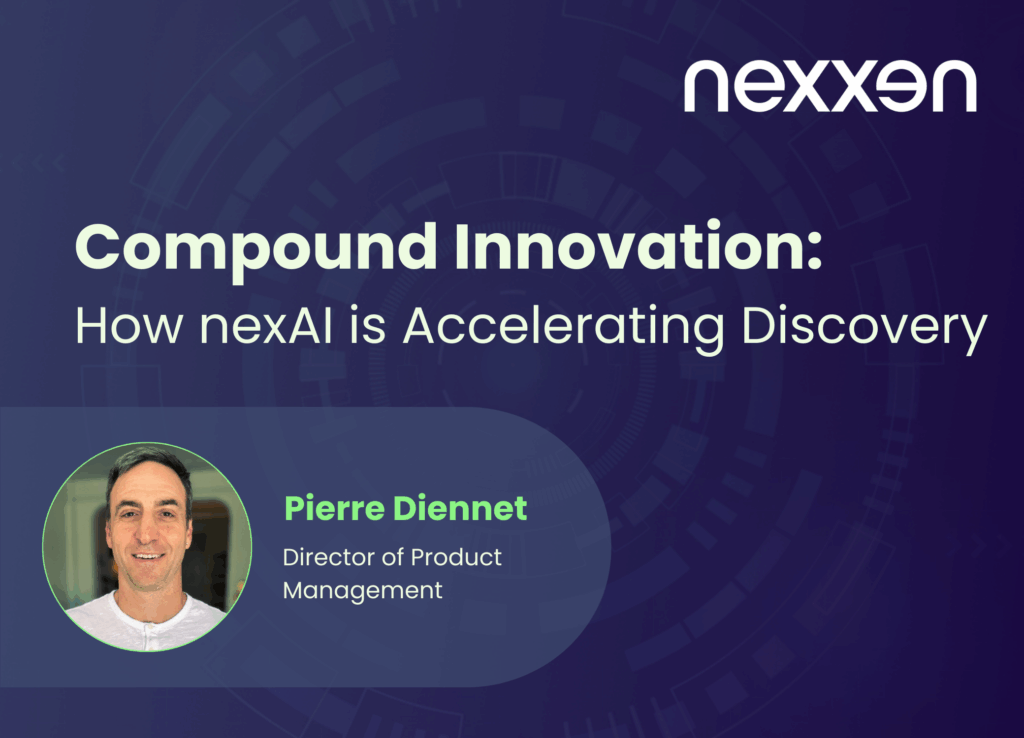
Linkedin Icon-xtwitterlogo-black Over the last 50 years, Olympic winning times in the Men’s 100m Freestyle have dropped by 10%, or 5 whole seconds – that’s like taking 10 meters off the length of the race. How is that possible, you ask? How have we achieved these gains? Have we figured out how to grow flippers? No, the answer is much more interesting… though growing flippers would be pretty cool. Our Olympians and their training teams have spent the last 50 years shaving precious tenths of a second from their times through “compound innovation,” the process by which tiny improvements across all influencing factors multiply each other and transform the outcome. At Nexxen, we’re experiencing a similar evolution — thanks in large part to the introduction of nexAI, our AI-powered intelligence layer, across our platform, including to the award-winning Nexxen Discovery. Nexxen Discovery was already driving significant value for our partners. Between Q4 2023 and Q3 2024, we found that campaigns powered by Discovery data outperformed their non-Discovery peers in meaningful ways, such as: +35% in view-through actions +30% in value per impression on click-throughs +31% in cross-device follow-through -45% in cost per action +89% post-click engagement lift In short: more precision, less waste and better performance across the funnel. However, the process that our clients were using to find those Discovery data targets, as as well as the time spent researching, validating and editing that data, was – to use “engineering” speak – non-trivial. Accelerating multiple activities What nexAI has done is accelerate those research and packaging processes. What used to take hours, sometimes days, is now being done in minutes. Partners can launch multiple research projects simultaneously, angling and mining into our proprietary data. nexAI lifts that burden. It works through Nexxen Discovery sentiment signals, search trends, competitive share-of-voice data and semantic analysis of web and TV consumption activity, and it synthesizes that data into simple, easy-to-use packages that can then be activated by our agency, brand and advertiser clients. Additionally, nexAI generates client-ready presentations with that data. It frees up time by not only delivering insights, but also creating complete narratives and branded decks that help drive engagement with prospects, or start conversatoins in the media-planning stages. It’s been saving hours a day for those using it – hours which can then be spent on refining the precision and performance of customers’ campaign strategies. Looking Ahead The integration of nexAI into Nexxen Discovery is just one example of how automation and analytics can work in tandem to support smarter decision-making. We are finding that the advent of artificial intelligence is not about removing human expertise from the equation – it’s about enabling that expertise to scale more effectively. As the media ecosystem continues to evolve, the ability to act quickly on high-quality insights will be a defining advantage. And as this integration continues to roll out, we’re already seeing its potential to reshape how campaigns are planned, executed and evaluated – on both sides of the marketplace. Ultimately, nexAI is compounding our team’s value across every facet of Nexxen’s offering – and we’re excited see what’s next. Learn more about nexAI Read Next Connect With Us Learn how you can effectively and meaningfully leverage today’s video and CTV opportunities with our end-to-end platform, data and insights. Contact Us
Life at Nexxen with Tyler Norwood
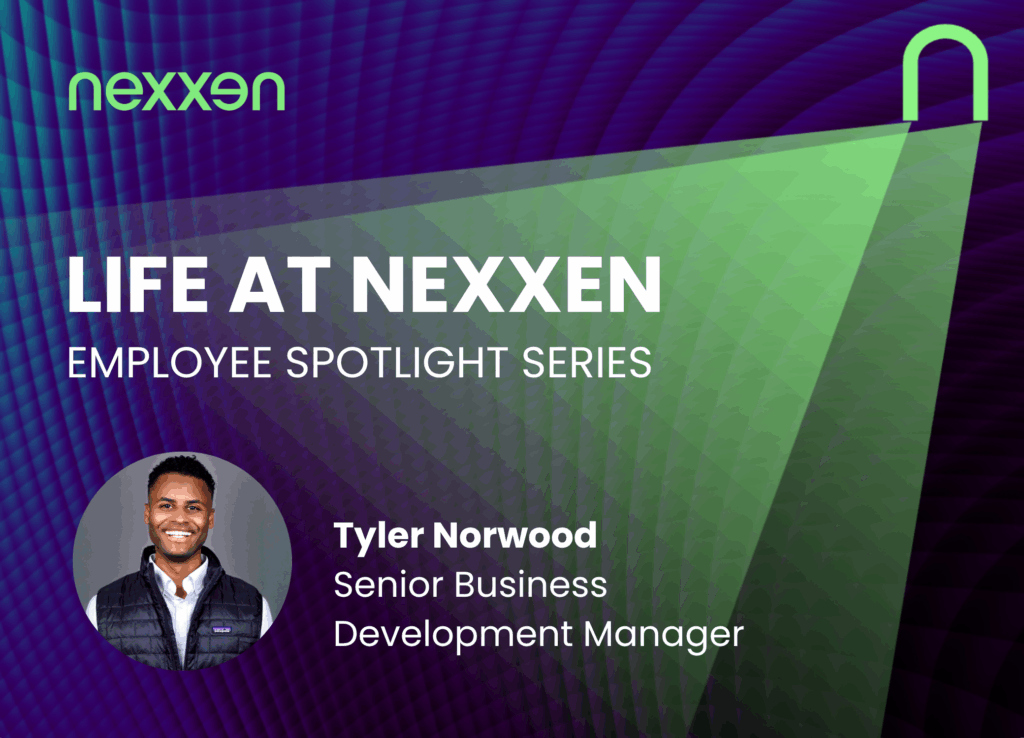
Linkedin Icon-xtwitterlogo-black Life at Nexxen is a blog series spotlighting our employees – from their career journeys and go-to advice to the rituals and activities that make up their days here at Nexxen. In this edition of Life at Nexxen, we spoke with Tyler Norwood, Senior Business Development Manager based in the U.S. west coast. Tyler shared the pivotal moment that shaped his career journey, how autonomy and ownership define his role here at Nexxen, and some great spots to grab a drink in LA. You’ve been with Nexxen for 3 years, originally joining our Unruly team. Before Unruly, were you in the ad tech space? I was working at a mid-level DSP, learning the ropes of programmatic and getting hands-on with strategy, campaign performance, and client partnerships. One day, I received a LinkedIn message from a Tremor recruiter who said, “I think you’d be a great fit for our Business Development team.” I wasn’t actively looking to make a move at the time, but something about the opportunity felt right and that conversation ended up changing everything. Fast forward to today, I’m leading demand facilitation efforts at Nexxen, assisting with driving adoption of our self-service PMP platform CTRL, and representing the company at industry events like Programmatic I/O. It’s been a wild and rewarding ride—and I’m just getting started. You mentioned that you have the same manager now as you did when you originally joined the company? Yes, I’ve been on Ally Appelbaum’s team since day one. She recently stepped into the role of VP of Global CTV Partnerships at Nexxen. When the recruiter first reached out to me about the opportunity, they mentioned that one of the biggest selling points was getting to work with Ally—they weren’t wrong. When I joined, we were a lean team of three. Since then, we’ve not only scaled the team but also helped grow our self-service PMP platform, CTRL, into a key offering for our partners. It’s been rewarding to contribute to that growth. What do you like most about your role at Nexxen right now? Honestly, it’s the mix of ownership and teamwork. In my role, I’m trusted to drive strategy for our partners, but I also get to collaborate with an incredibly sharp and supportive team. That makes a huge difference. No two days are the same. There’s a lot of creativity involved, and I love being in a position where I can connect dots across teams – product, sales, ops, you name it – and help bring ideas to life. It’s fast-paced, but my colleagues at Nexxen make it enjoyable. For business development, what does that role entail here at Nexxen? At Nexxen, business development is all about scaling strategic partnerships and driving long-term growth. In my role as a Senior Business Development Manager focused on Demand Facilitation, I run point on CTRL platform adoption with our supply partners, assisting them in packaging their own PMP deals, while also surfacing premium inventory opportunities across our internal demand teams. This includes unlocking high-value supply such as live sports, first-ad-slot targeting, and seasonal tentpoles. In a competitive SSP landscape, relationships are everything. Publishers choose partners based not only on technology but on trust and strategic collaboration. The enterprise supply team’s responsibility is to strengthen those relationships and help our partners succeed. Going further back in your career journey, what was your college major? I earned a BA in Communications and later attended graduate school to get my MBA, focusing on strategic management. During the pandemic, I even gave law school a shot for a semester, but it didn’t take long to realize that path wasn’t for me. That decision ended up being a blessing. I pivoted into ad tech and got my start at a mid-sized DSP, where I had to learn everything from the ground up: how programmatic works, how deals are structured, and how buyers and sellers connect in the ecosystem. It was (and still is) a learning curve, but it set the stage for where I am now. So in your day-to-day at Nexxen, do you have a morning routine? Music first—usually a Spotify “hype” playlist to get in the zone. Then it’s coffee, NPR for broader news, and a quick scroll through Digiday or AdExchanger to stay current on trends shaping the ad tech space. It helps me walk into the day informed. Do you have any hobbies that you enjoy doing on the weekends? I love trying out new happy hours around LA with my triplet brothers, carving out time to read, or making the drive to San Diego for beach days and scenic hikes. Is there any place in LA that you’d recommend for their Happy Hour? Laurel Tavern in Studio City—great food and a solid Old Fashioned. For something more laid-back, I head to Tiny’s Hi Dive on the west side. It’s a dive bar with character, where I’ll head with coworkers after work. Read Next Connect With Us Learn how you can effectively and meaningfully leverage today’s video and CTV opportunities with our end-to-end platform, data and insights. Contact Us
Life at Nexxen with Catherine Dauphin
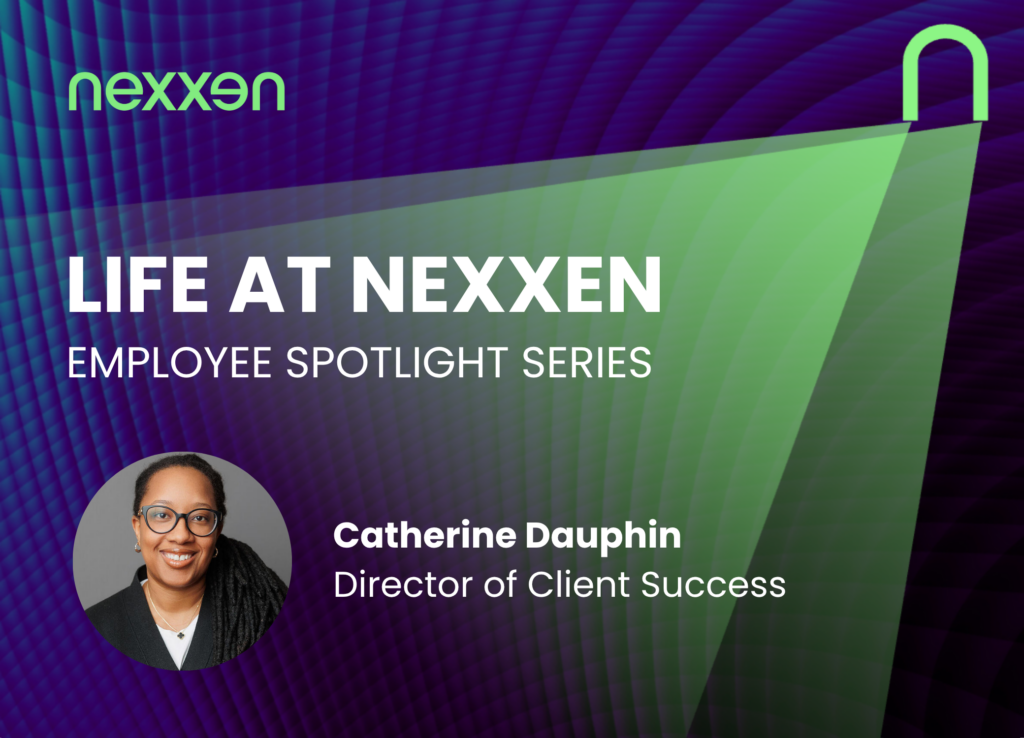
Linkedin Icon-xtwitterlogo-black Life at Nexxen is a blog series spotlighting our employees – from their career journeys and go-to advice to the rituals and activities that make up their days here at Nexxen. In this edition of Life at Nexxen, we spoke with Catherine Dauphin, Director of Client Success from our New York office. Catherine spoke about her path to leadership, what she believes is most important as a manager, and how she spends the first ten minutes of the day. How long have you been with Nexxen? I just celebrated my 14th anniversary, originally joining the company on the Tremor Video side. That’s a long time! Since you’ve been with the company through multiple acquisitions, what has helped you manage the challenges of new teams, processes, and overall change? It’s a new experience with new opportunities for growth. Understanding that with the change, you can look forward to what is coming. There was always excitement with each acquisition, which is why I’ve continued my career here for so many years. What was your first role at Tremor Video? I joined Tremor Video as an Account Manager, recruited by one of the sellers in the auto vertical. I had actually worked previously at an agency specializing in automotive accounts, so she knew I had relevant experience. I was new to video when I started at Tremor; I had the digital experience, but it was mostly display. I learned all about video as an Account Manager, and then progressed into management and higher leadership roles. Did you always want to go into leadership? Or was it something that you naturally gravitated towards as you progressed in your career? I didn’t know from the start of my career that I specifically wanted to achieve a leadership role. It grew out of me becoming a better Account Manager and becoming more senior on the team. I became the go-to person to train any new hires, and that naturally led me towards wanting to pursue a leadership role. I knew I could do well in a leadership role because I truly enjoy helping people. So I worked hard to become a Manager, then a Senior Manager, and now a Director. As a manager, how do you make sure that you’re bringing out the best in your team? It’s important to lead by example. I’m the type of manager that’s willing to roll up my sleeves and do the work alongside my team. I don’t just delegate but often offer to sit side by side to figure out a solution. If someone on my team goes out of office, I will step in and cover their work for them. Not only do I feel like it shows that I’m helping them, but it actually helps me too. My motto is “if you don’t use it, you lose it.” It sounds like you’re an amazing manager. In that vein, how do you handle giving constructive feedback to your team? I emphasize being open and having real conversations. This builds trust and ensures that my team feels that they can talk to me about any issues or challenges that they have. And when you establish that trust, it does ease some of the more challenging but necessary conversations with constructive feedback. As a manager, it’s important to have that rapport so that we can have those kinds of conversations and be productive with them. You mentioned that you’re hiring for your team. When you’re looking for someone to join the team, how do you evaluate people? What kind of traits are you looking for? Due to the nature of our enterprise team, the first thing I look for is someone that has at least a couple years of hands-on-keys experience in other platforms. Historically, when I was on the Strategic Sales side, I was more willing to train someone that was new to advertising. However, now we’re in a position where we do need someone with a solid foundation of experience. Secondly, I look for someone who’s proactive, which is crucial for Client Sucess roles. When you’re working directly with clients and in a service-based business, you have to be proactive. You must think about and anticipate what the needs of your clients are and then get ahead of that. At what point is your team coming in to work with an account? The Client Services team comes in “post-sale.” From there, we’ll onboard the client with trainings on how to utilize our platform. We’ll take them step-by-step through their first campaign setup. We tailor our onboarding program depending on the client’s experience level and needs. After onboarding, we’re their point of contact for the duration of the relationship. A big part of what we do is the day-to-day management of the campaigns, optimization, and troubleshooting. Do you have any rituals to start your day or to unwind from a busy day at work? A lot of my routines revolve around my daughter, who’s 6 years old. But since I’m usually the first in the family to wake up, I start my day with a brief 5 – 10 minute journal entry before I get my coffee going. In terms of winding down, I try to end my day by reading. I’m currently reading Parable of the Sower by Octavia Butler. Read Next Connect With Us Learn how you can effectively and meaningfully leverage today’s video and CTV opportunities with our end-to-end platform, data and insights. Contact Us
The NBA Finals: A Marketing Slam Dunk
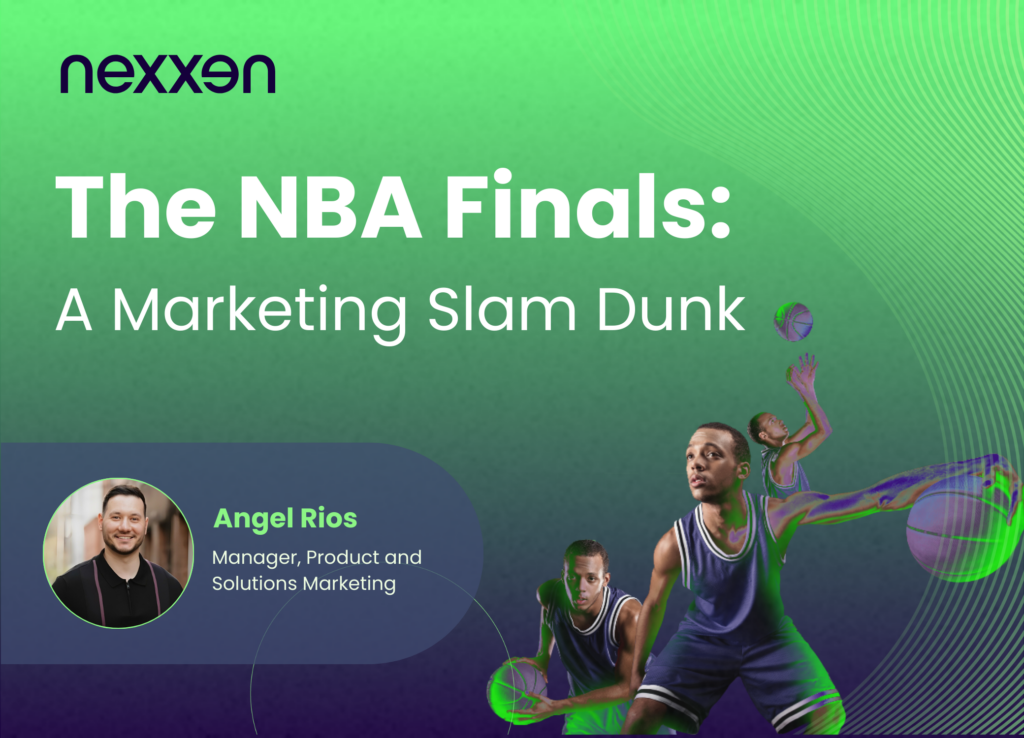
Every June, millions gather around screens to watch the NBA Finals, and brands that align with this cultural phenomenon often find themselves scoring big. Angel Rios, Manager, Product and Solutions Marketing, explores the impact and reach brands can have during this event, and how they can utilize this unmatched opportunity for success.
Life at Nexxen with Stephanie Baghai
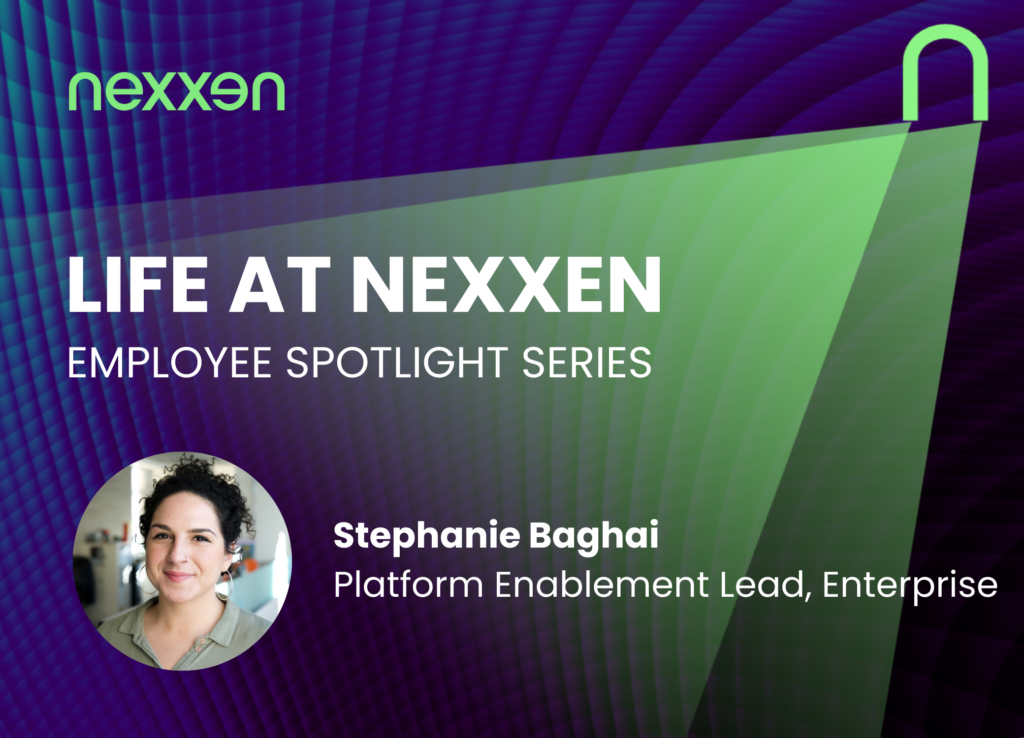
Linkedin Icon-xtwitterlogo-black [Author’s Note – At the time of our conversation, Stephanie was a Delivery Manager, thus this article focuses on this team and area of the business.] In this edition of Life at Nexxen, we sat down with Stephanie Baghai, Delivery Manager from our Los Angeles office. We started the conversation with a language skill we found on Stephanie’s LinkedIn profile, discussed how the team handled the general election season, and found out her next travel destination. You have Portuguese listed as a fluent language on your profile, is it your first or second language? I learned Portuguese at the same time as I learned English, but I consider Portuguese my first language. My mother is Brazilian, so I used to spend every summer in Brazil as a kid. Once, after returning from an extra-long visit home, I actually had to register as an ESL student to help re-learn English when I returned to the states. Is there a Portuguese saying or proverb that you really like? “Cada macaco no seu galho” which literally means “each monkey in his own branch.” It’s a reminder to not concern yourself with what others are doing. Did you grow up in Los Angeles? Yes, born and raised in a Brazilian community. I really enjoyed growing up immersed in the culture and the food. And you attended college in the Midwest? For college, I wanted to go somewhere far away and different. I visited Marquette University in Milwaukee and it checked a lot of the boxes I wanted for a university, not least of which was a great business program. Your past career experience utilizes your business and marketing education. Can you explain how you joined the Delivery Management team here at Nexxen? It was a role for the Amobee DSP. They had seen the advertising portion of my Google ad and campaign experience, and thought I’d be a great addition to the team. It was a sliver that I wanted to expand more on. It was nice having that client facing experience in my past role while also having that technical back-end experience. In the beginning, I wasn’t sure what to expect with the role. As the interview process went on, I became very excited and thought it would be a great fit. Now, I’ve been here for 3 years and I really enjoy the work I do. Can you explain how Client Success, Account Management, and Delivery Management teams work together? At Nexxen, we customize our approach to each client. If they want a Delivery Manager or a team that’s more hands-on, we’re happy to provide the support they’re looking for. For some clients, we’ve done in-person training with their team, because they wanted that extra hands-on experience and insight into our DSP. Other clients let us manage their campaigns completely without any explanation. They trust that we’ll be able to outperform our competitors and exceed their needs, so adapting to each client and their campaign needs is one of our big driving factors. How do you decide the campaign delivery strategy – which vehicles you’ll be delivering in? Nearly all my clients are in the political space, so it’s extremely niche in terms of targeting and delivery. They know exactly what districts they want to serve with incredibly specific parameters. In that regard, we’re focused on optimizing each client’s campaign to stand out when everyone else is also competing in the same districts with the same people. This also means really tough competition in this niche market. Oftentimes we’re targeting only a few zip codes with a specific age group, demographic, income, and/or political party affiliation. During election season, particularly for swing states, it’s us and everyone else competing for the same six states. In this way, it’s different in terms of a strategy for a consumer good or even generic brand awareness campaign. Are you and your team members assigned to specific regions within the U.S.? No, we serve all regions. Many of our clients are based in Washington D.C., but we have team members on both coasts and in the central regions. This ensures that there is always someone available to our clients whenever they need us. The last few weeks before a general election, however, the whole team is essentially running 24/7. Leading up to the election, how did you and the team stay grounded during such an intense period? During such a busy time, it helps that each member of the team is as invested as you are. Knowing that you’re not alone and that what we’re doing is making a significant impact for our clients helps keep you motivated. It’s a true all-hands-on deck collaborative effort – the team can swap hats at any given time, jumping in and out of their regular roles and responsibilities. You know that we always have someone to step in and make things happen. What are hobbies that you enjoy? I love to travel. I love experiencing vastly different places, food, cultures, languages and people. I think it’s incredibly insightful, rewarding, and a privilege that’s helped me in my personal (and professional) growth. Ok one more question since said you mentioned travel: What is your favorite place that you’ve traveled to so far? And what’s the place you’re looking forward to visiting in the future? For my favorite, I have two answers. My most unexpected favorite place was Egypt. I knew I would enjoy the trip, but I was blown away by how well preserved and intact the history and ruins were. My second answer is Peru, because it was just so beautiful. I went with five of my best friends, and we did a five-day hike to Machu Pichu. It was a once in a lifetime kind of experience – it was picturesque, and very challenging – in a good way. For future travels, I’m looking forward to going to Taiwan. Particularly for the night markets, because I love street food. Read Next Connect With Us
